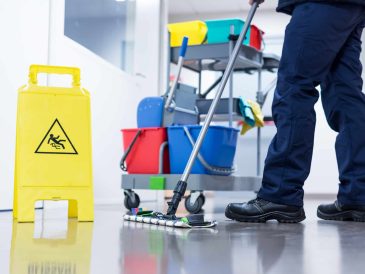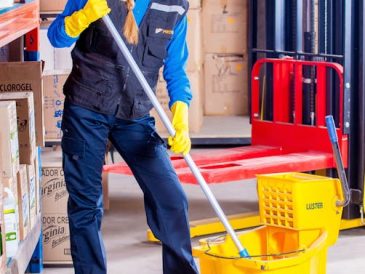Sick Building Syndrome (SBS) is a term used to describe a condition in which occupants of a building experience various health issues or discomfort that can be attributed to the building itself. While the term may sound alarming, it is crucial to understand the factors that contribute to SBS and how it can affect office environments. In this article, we will explore the concept of Sick Building Syndrome, its potential causes, symptoms, and ways to mitigate the risks in order to create a more productive and healthier workspace.
Understanding Sick Building Syndrome
 Sick Building Syndrome refers to a range of symptoms that individuals experience when spending time in a particular building, typically an office or a commercial space. These symptoms may include headaches, eye irritation, respiratory problems, fatigue, dizziness, and difficulty concentrating. SBS is believed to be caused by a combination of factors related to indoor air quality, ventilation, and the presence of various pollutants or contaminants.
Sick Building Syndrome refers to a range of symptoms that individuals experience when spending time in a particular building, typically an office or a commercial space. These symptoms may include headaches, eye irritation, respiratory problems, fatigue, dizziness, and difficulty concentrating. SBS is believed to be caused by a combination of factors related to indoor air quality, ventilation, and the presence of various pollutants or contaminants.
Potential Causes of Sick Building Syndrome:
There are several factors that can contribute to the development of Sick Building Syndrome in office environments. These include:
Poor Indoor Air Quality: Indoor air quality is a significant factor in the development of SBS. Factors such as inadequate ventilation, high humidity levels, and the presence of pollutants like dust, chemicals, or volatile organic compounds (VOCs) can contribute to poor indoor air quality.
Inadequate Ventilation: Insufficient fresh air exchange and inadequate ventilation systems can lead to the accumulation of pollutants indoors. Without proper airflow, contaminants and odors may linger, affecting the air quality and potentially causing SBS symptoms.
Chemical Pollutants: Office spaces often contain various chemicals and pollutants that can contribute to SBS. These may include cleaning agents, pesticides, formaldehyde from furniture or carpeting, and off-gassing from building materials. Prolonged exposure to these substances can cause discomfort and health issues.
Biological Contaminants: Biological contaminants such as mold, bacteria, and pollen can thrive in poorly maintained or damp office spaces. These contaminants can trigger allergic reactions and respiratory problems, contributing to the development of SBS.
Poor Ergonomics: While not directly related to air quality, poor ergonomics in the office environment can also contribute to SBS symptoms. Uncomfortable seating, improper lighting, and inadequate workstation setups can lead to physical discomfort and strain, affecting overall well-being and productivity.
Recognizing the Symptoms:
 It is essential to recognize the symptoms associated with Sick Building Syndrome. Individuals affected by SBS may experience:
It is essential to recognize the symptoms associated with Sick Building Syndrome. Individuals affected by SBS may experience:
- Respiratory symptoms like coughing, wheezing, or shortness of breath.
- Allergic reactions including watery eyes, nasal congestion, or throat irritation.
- Headaches, dizziness, or difficulty concentrating.
- Fatigue, lethargy, or a general feeling of being unwell.
Mitigating the Risks and Creating a Healthier Workspace:
To minimize the risks of Sick Building Syndrome and create a healthier office environment, consider the following strategies:
Improving Ventilation: Ensure that the office has proper ventilation systems in place, allowing for a steady supply of fresh air. Regularly maintain and clean air filters to prevent the buildup of dust and other contaminants.
Enhancing Indoor Air Quality: Implement measures to improve indoor air quality. This can include using air purifiers, reducing the use of chemicals, regularly cleaning and maintaining the office space, and promoting proper hygiene practices among employees.
Addressing Water and Moisture Issues: Promptly address any water leaks or moisture problems to prevent the growth of mold and the spread of other biological contaminants. Maintain optimal humidity levels to minimize the risk of mold development.
Providing Adequate Lighting and Ergonomics: Ensure that workstations are properly set up with ergonomic furniture and adequate lighting. This helps prevent physical discomfort and promotes employee well-being.
Educating Employees: Educate employees about the potential risks of Sick Building Syndrome and encourage them to report any symptoms or concerns. Encourage good hygiene practices, such as regular handwashing and proper storage of food, to minimize the spread of germs.





